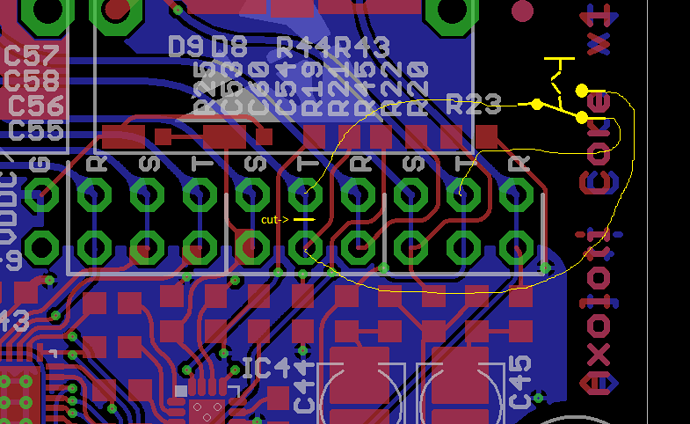Hi Gavin,
Thanks for the quick reply.
Yes I would like to bypass the axoloti completely, but I want to still use the audio in/out jacks
of the axoloti. I saw that there are these RTS solder holes behind the jacks where I could put such a
bypass switch (3PDT switch, because only mono signal is used) between in/out jacks and the AD converter of the axoloti, so if the switch is off the signal goes directly to the output jack, and if the switch is on, the signal goes through the axoloti.
But I think these soldering holes are somehow connected inside the board, so I need to cut this connection somehow right?
But anyway, nice project you have going on there. I'm also trying to build my own case.
In my case I think I need a true bypass, because I also have other analog effect pedals, that I want to use in the same loop. But maybe it does not really make a difference, I need to test that.

